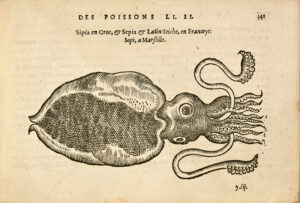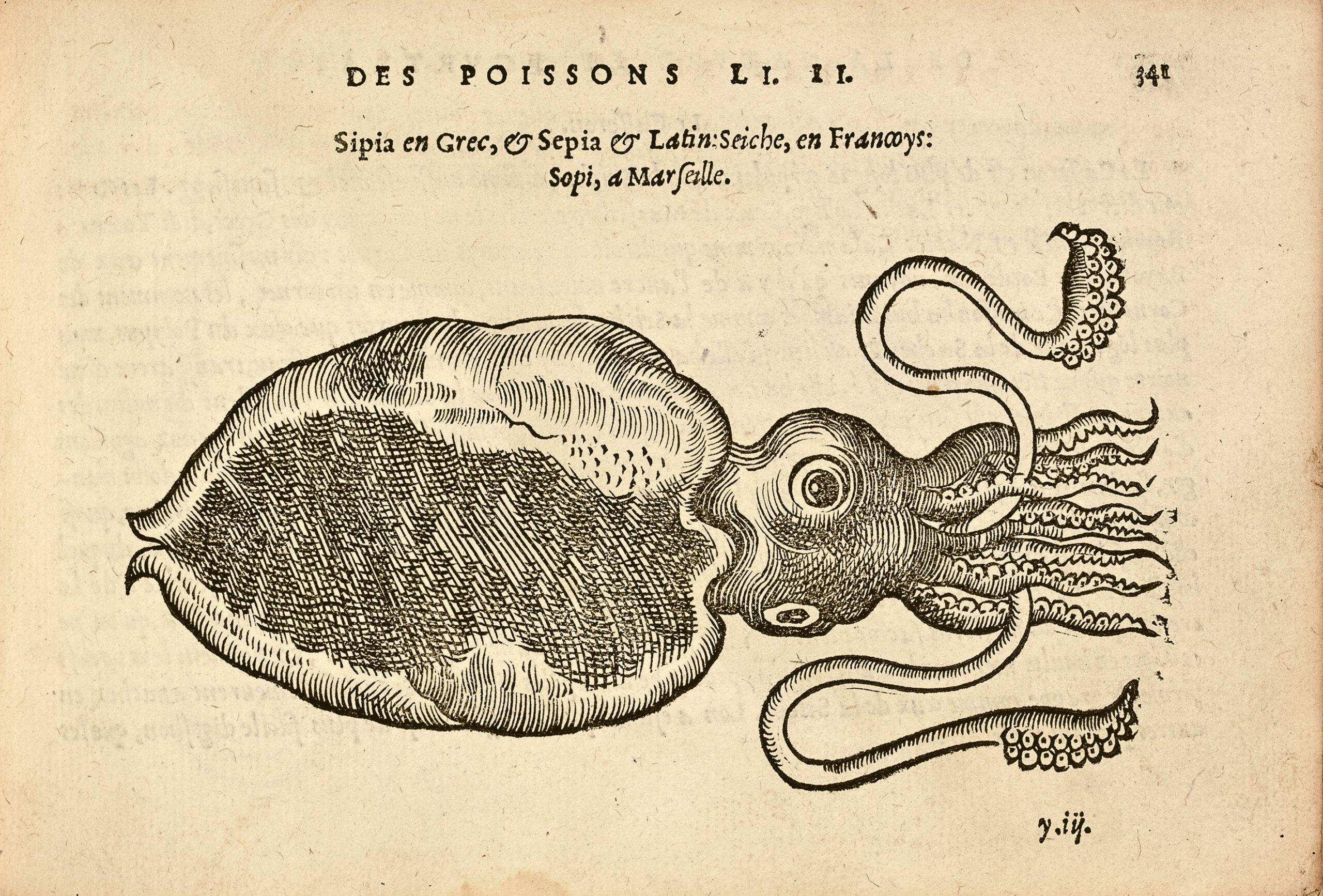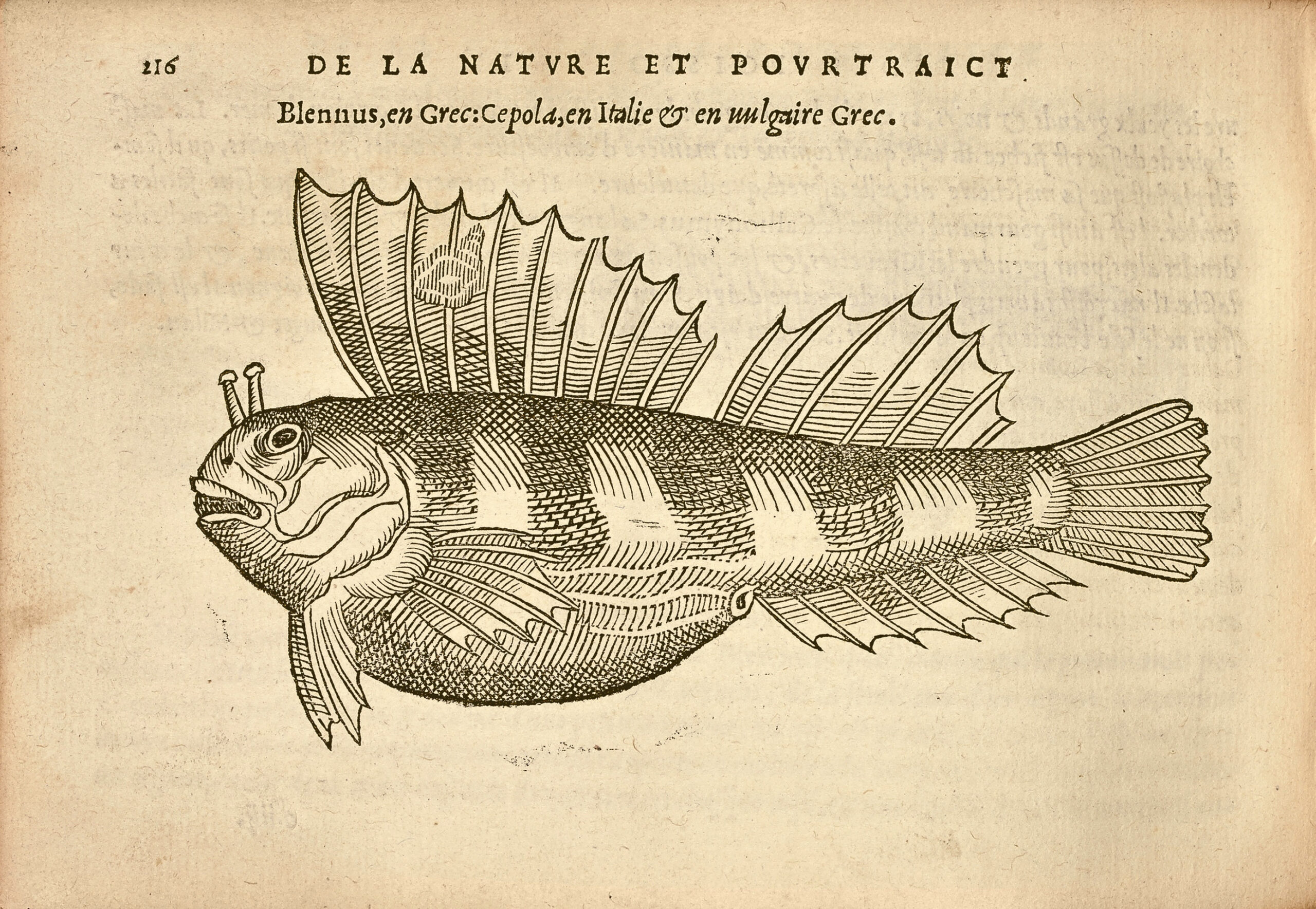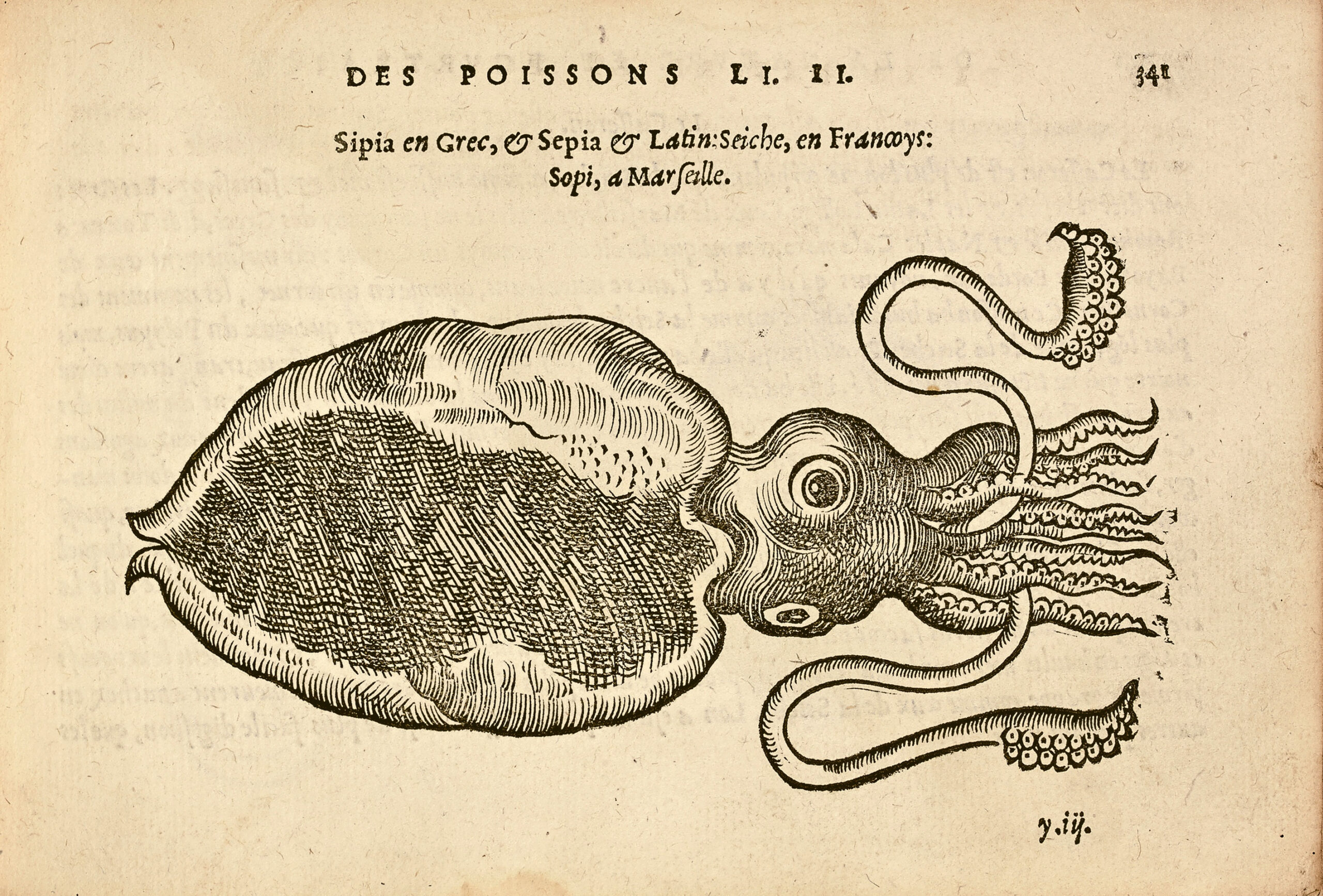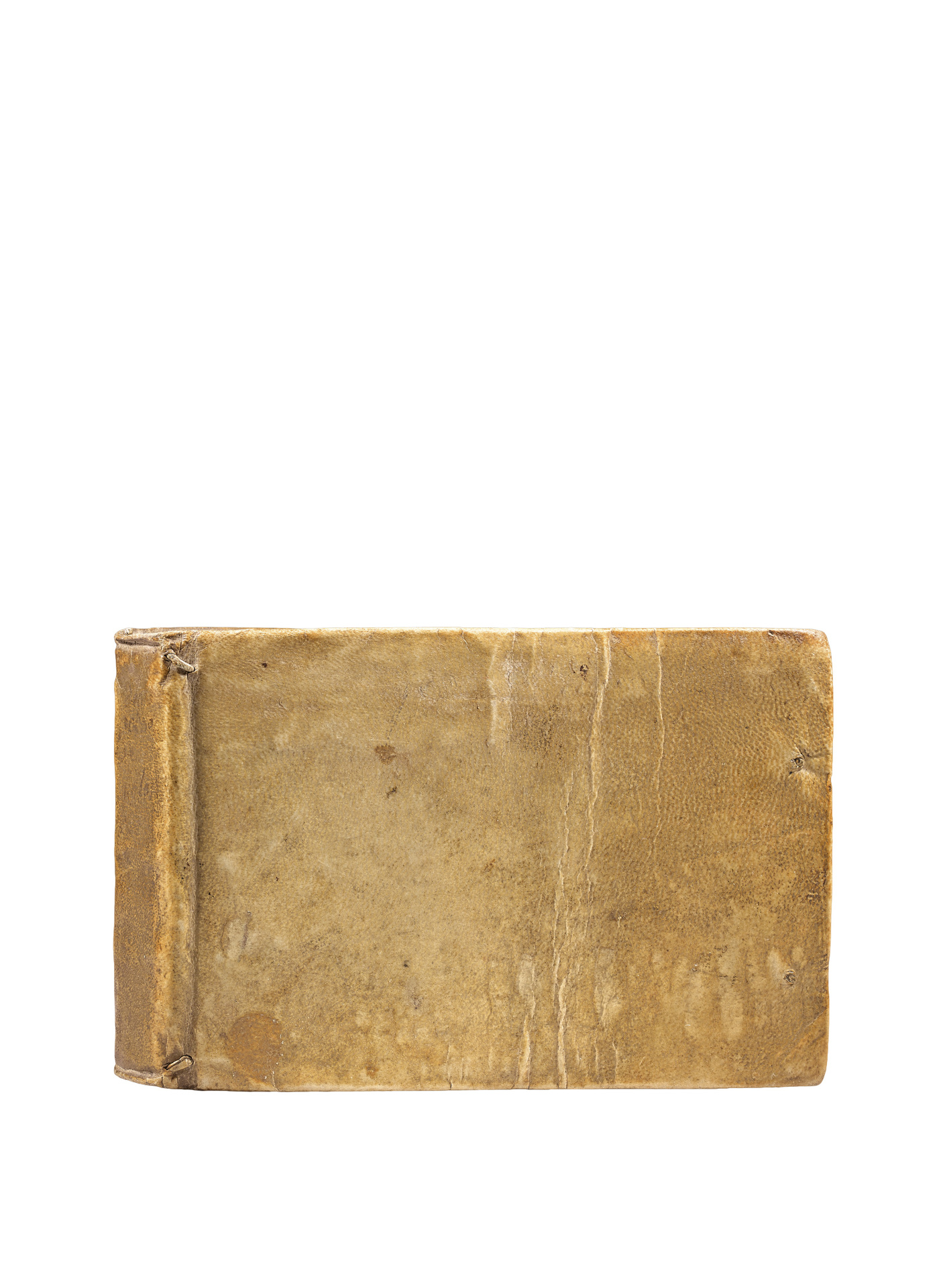Paris, Charles Estienne, 1555.
Oblong 8vo [157 x 106 mm] of (1) bl.l., (20) ll., 448 pp. with 186 woodcuts in the text. First endleaf and verso of the title covered with ancient handwritten notes, small ancient repair in the margin of the last l. not affecting the text. Bound in full contemporary limp vellum, remains of ties on the covers, flat spine. Contemporary binding.
French editio princeps of this remarkable ichthyology treatise of the 16th century, illustrated with 186 woodcuts about fish. Renouard, Les Estiennes, 109; Brunet, I, 761; Nissen, Schöne Fischbücher, n° 14; Thiébaud, Bulletin des chasseurs bibliophiles 76, 1962, n° 102 ; Graesse, Trésor de livres rares, I, 331; Berthelot, T. VI, p. 103; Jourdan, Dictionnaire des sciences médicales, p. 138.
Extremely rare, this edition described by Brunet (I-761) is the very first one of the three published in the year 1555: “It exists, we say, three editions of this translation, made in Paris at the same date, and offering noticeable differences between them. We have given the title of the first (above), here is the one of the other two: 1/ De la nature et diversité des poissons avec leurs descriptions et naïfs pourtraicts, in 7 folio books. – 2/ Histoire des poissons, traitant de leur nature et propriétez, aves les pourtraicts d’iceux, 4to (in French and Latin): I have only seen the 8vo and the 4to edition; the latter is a volume composed of 20 preliminary ll., and 448 pp., with 184 woodcuts printed with the text.”
This third edition of 1555 is trading, according to Brunet, at the double of the Latin edition of 1553 described hereafter. An edition originally published in 1551 under the title of L’Histoire naturelle des estranges poissons marins, illustrated with 21 woodcuts, then an edition enlarged with many figures (1553), published this time in Latin under the title De Aquatilibus libri duo.
Very sought-after work for the quality of its woodcuts, its precious notes and for Pierre Belon du Mans’ personality (1517-1564), cardinal of Tournon’s apothecary, and a great traveler and naturalist.
It contains 186 woodcuts, including the ones of the sea monsters and of the famous “Pourtraict de la teste d’un Saulmon femelle”. We attribute the illustration to Pierre Gourdelle, who also realized the one of the Histoire de la nature des oiseaux, published the same year by Pierre Belon.
This work is, along with Rondelet’s, the first treatise of scientific ichthyology, bringing authentic observations that are not taken from Aristotle or Pliny. Real pioneer in embryology, Belon restarts the studies about the anatomical structure of fishes, and defends the realistic representation of the animals to teaching and identification ends. Though, we find, as in Rondelet’s work published at the same time, the representation of sea monsters, including the famous one of a monster which looks like a monk.
Belon suggests a classification of the sea animals, which includes fish, strictly speaking, but also mammals, including the Cetacea, the Cephalopoda, the shellfishes, the Crustacea. Pierre Belon describes in this work, for the first time in Europe, many animals that were unknown until then. His classification is reputed better than Guillaume Rondelet’s one, and better observed; by basing his classification on the anatomy of thoracic and abdominal organs, Belon was opening a new way for science. A lot of his observations have been acknowledged as accurate by later researches.
“Great traveler, ethnologist, ichthyologist, ornithologist, botanist, Belon is one of those who renewed, by the direct and on location observation, the study of natural sciences, reduced before him to the erudite gossips of the ancient texts. Belon gave all his research a practical scope, perfected the vegetal acclimatization, introduced in France exotic species. Finally, he tried to substitute French to Latin, as scientific language. […]”
This editio princeps is extremely rare and Robert Brun (Le Livre Français illustré de la Renaissance, p. 119) only knows the third edition of 1555 that he describes this way: “180 delicately engraved woodcuts of which one, p.33, represents a sea monster with the look of a monk, the illustrator of the ‘Recueil de la diversité des habitz en 1562’ drew his inspiration from it.” This sea monster is present in this 1555 editio princeps.
Handwritten note from the 18th century on the title: “this book is quite rare”.
A very beautiful copy preserved in its contemporary limp vellum binding with a fine patina.
